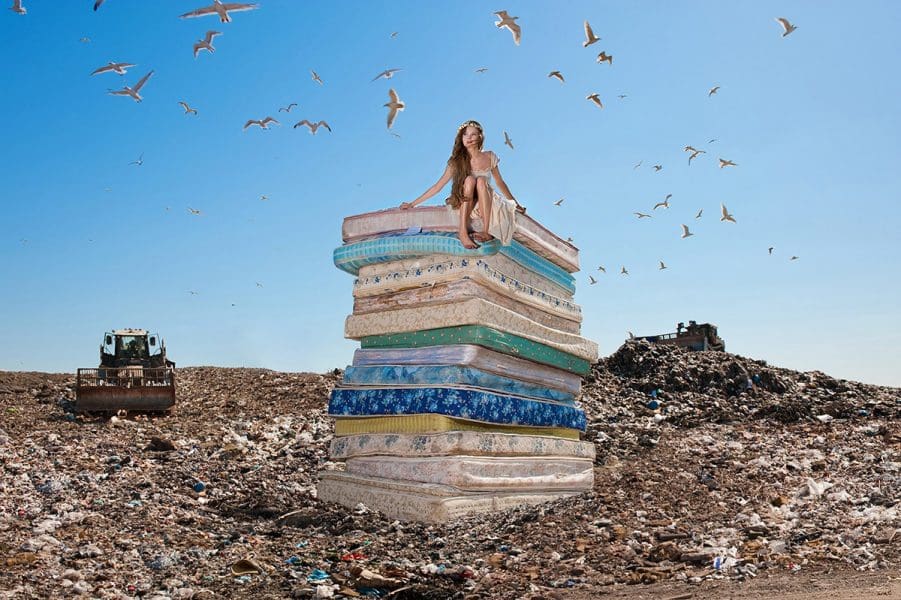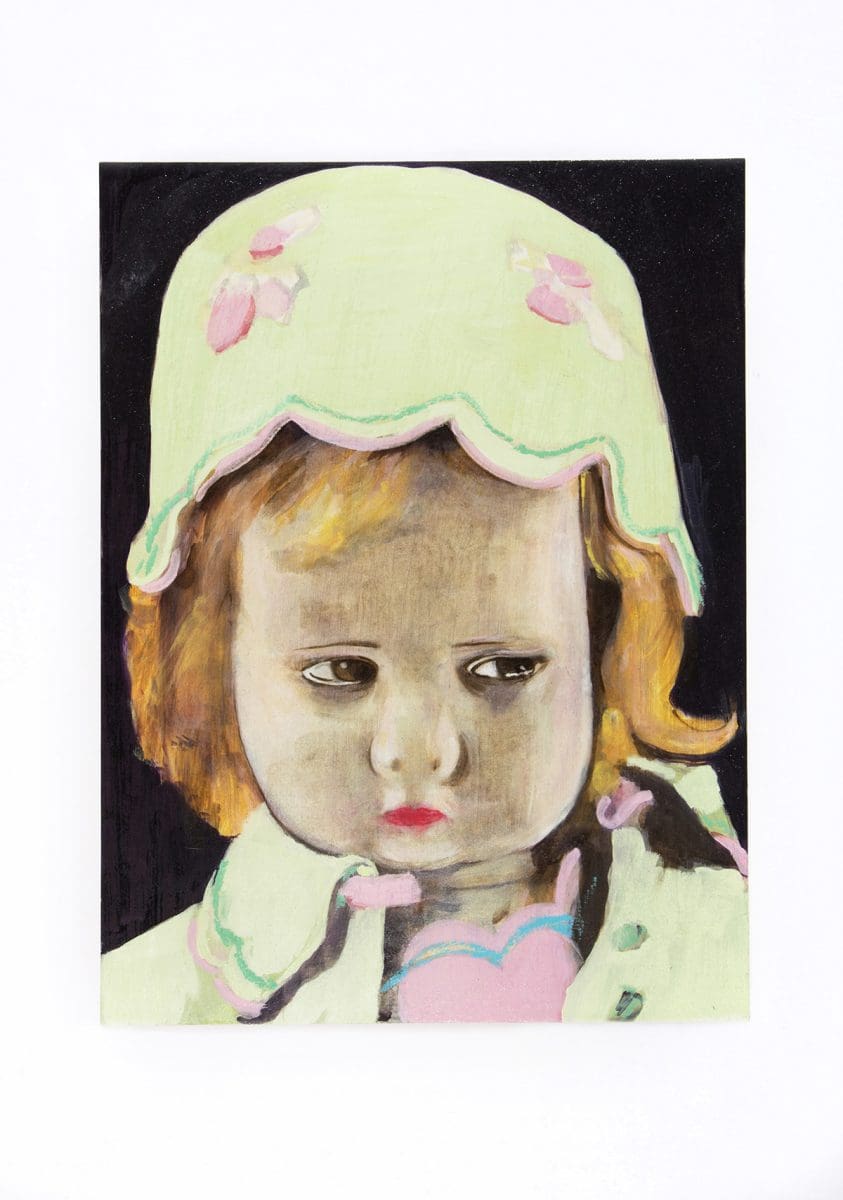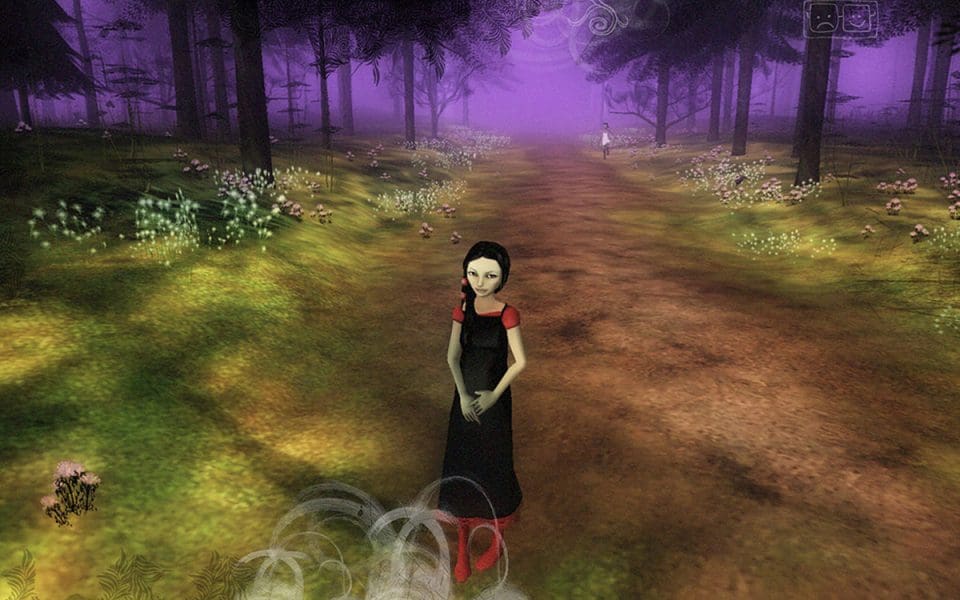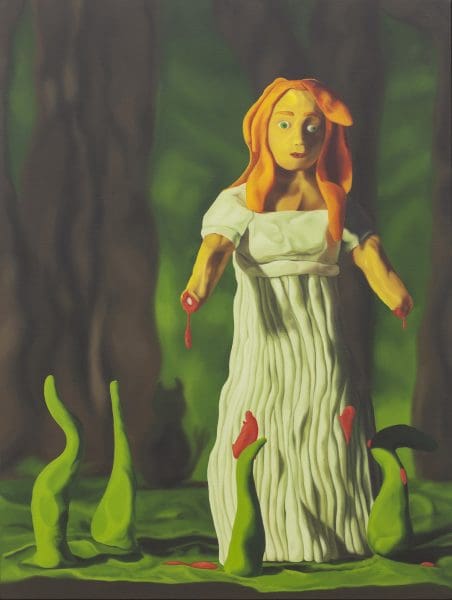
Piercing the veil
A new exhibition at Buxton Contemporary finds a rich complexity in the shadowy terrain between life and death.

Dina Goldstein, Princess Pea, 2009, from the Fallen Princess series. Courtesy of the artist.

Kate Daw, Lenci doll (back to the before), 2016. Courtesy the artist and Sarah Scout Presents, Melbourne.

Polixeni Papapetrou, The Witch’s House, 2003, type C photograph, 100 x 100 cm. Courtesy the artist, Micheal Reid Gallery, Sydney + Berlin and Jarvis Dooney Galerie, Berlin.

The Path 2009, computer game, developed by TALE OF TALES, designed and directed by Auriea Harvey & Michaël Samyn. Music by Jarboe & Kris Force.
Snow White, Cinderella, Sleeping Beauty, Bluebeard, Red Riding Hood, the Goose Girl, the Juniper Tree. Versions of these stories exist across cultures, their elements shifting subtly through a thousand retellings. Details merge, or are discarded, or are invented anew. We have been telling the same stories for thousands of years.
The fairy tales we’ve come to know as definitive (collected in Germany and France in the 18th and 19th centuries) are just frozen words, caught at a random moment in their flow from one person to the next. Not simply recorded, they were frequently rewritten by men with an agenda. The Grimm brothers, for example, liberally added Christian motifs, altered elements to feel more ‘German,’ and removed sex and violence, moulding their ‘peasant tales’ into quite different forms that have now filtered through two hundred years.
The stories are still being retold by other voices. Throughout All the better to see you with: Fairy tales transformed, curated by Samantha Comte, the embattled female figure reoccurs again and again in different guises: the princess, the witch, the murdered virgin, the mother, the grandmother, the seductress, the child. These identities blur between works, never settling. Extending across nearly the entirety of the Ian Potter Museum’s three floors, each ascent of the staircase feels like a page turn. Artworks echo each other between spaces, but with details slanted, stories told anew.
Here, Amanda Marburg’s paintings depict fairy tale scenes, the end of a process in which the artist constructs elaborate plasticine figures, to be photographed and reproduced in hyperrealistic oils. Maiden With No Hands, 2016, stands awkwardly, hands lopped off at the wrists, spattered with plasticine blood. The series is captivating, and immensely uncomfortable.

Opposite Marburg’s work is a stunning wall installation by Sally Smart, Blaubart (A Choreography of Cutting), 2017. This is a conceptually complex layering of textiles and photograph: sinister cut dresses, silhouettes, suspended wigs, a densely embroidered eye. The thread of the work is the story of Bluebeard and his secret room of murdered wives. But Smart pulls the thread, lays the pieces out, allows them to be rearranged. In the centre of the work are three bent female dancers, faces hidden in their long hair.
Figures of three dancing women reappear in Allison Schulnik’s mesmerising and macabre claymation video MOUND, 2011, where they sway in unison, hair and hands dangling. “It’s raining today,” a male voice croons, “but once there was summer and you, and dark little rooms….” Are they dead, these women, these wives of Bluebeard hanging like coats? Are they wizened old women, reanimated corpses, ghosts? Or just young girls playing dead? Both MOUND and Schulnik’s other video work, EAGER, 2014, are populated by ever-morphing forms, bone-like white streaked with colour. Fingerprints visible in their plasticine surfaces, they melt and reshape, somehow sweet but sinister.
These begin with the ground breaking animations of German artist Lotte Reiniger, made from the 1920s onwards. Told through shadow puppets, Ashputtel, Hansel and Gretel, Aladdin’s Lamp and so on are brought to silhouetted life. After watching a number of these on the ground floor there’s a one-two punch upstairs in the form of American artist Kara Walker’s Burning African Village Playset With Big House and Lynching, 2006. Here the silhouettes are ghastly caricatures, presented as the model for children’s storytelling. We learn early, Walker is saying, and we learn what we are told. Stories are dangerous.
Something that feels missing in All the better to see you with is the presence of queer voices that might question or subvert the rigid structures of fairy tale morality. Women of colour are also underrepresented. Aside from Walker, Tracey Moffatt’s mystical Invocations series, and the work of Japanese artist Miwa Yanagi, the narratives don’t stray too far from white Western heteronormativity. The dense layers within this exhibition, however, will continue to unfold long after you’ve left the gallery; the stories pulse and morph, retelling themselves in perpetuity.
All the Better to See You With: Fairy tales transformed
Ian Potter Museum of Art
27 November – 4 March